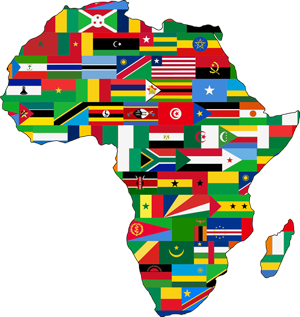
Written by: Gina Tumbarello | March 11, 2021
 PART ONE: Building a Case for Africa
PART ONE: Building a Case for Africa
The United States is no stranger to Africa, having had a number of interests in the policies shaping the diverse continent over the years. Our interests have ranged from political – gleaning ways to prevent conflict and reduce political instability that can threaten U.S. national security – to humanitarian – combating the root causes of hunger and poverty, which also stands to benefit U.S. security and prosperity.
In an effort to enhance trade and investment efforts on the continent, in 2001 and 2008, the U.S. signed Trade and Investment Framework Agreements respectively with the East African Community (EAC) and with the Common Market for Eastern and Southern Africa (COMESA). But, over the past few years, we have seen a new and revitalized view develop of Africa – one where individual countries are viewed as potential partners for U.S. businesses and a marketplace for U.S. products, including those of the animal food industry.
If we have learned anything from recent events, including the trade war with China, African swine fever outbreaks and the COVID-19 pandemic, it is that we cannot tie the success of U.S. businesses and the U.S. economy to access to only a few markets. As economies become more globally interdependent, it is becoming more evident that U.S. businesses must be protected from global shifts in demand.
Competition in Africa from the European Union, China and Russia has taken a foothold, aggressively targeting investments in the region and gaining a competitive advantage over the United States.
In response to this competition, former President Donald Trump launched Prosper Africa in 2018. This governmentwide initiative to connect U.S. and African businesses with buyers, suppliers and investment opportunities is intended to “support U.S. investment across the continent, grow Africa’s middle class and improve the overall business climate in the region.”
Africa represents almost 17% of the world’s population, housing six of the 10 fastest growing economies in the world. With over 1 billion consumers, Africa is poised to play a key role in the global economy. However, despite these large numbers, the continent is far from homogeneous with extremely diverse regions and countries. Per capita meat consumption ranges from as low as 10 kg/person to 60-70 kg/person, according to the Food and Agriculture Organization, compared to per capita meat consumption for the average American at 101 kg/person Representing a wide breadth of agricultural capabilities, development and infrastructure, there is a movement on the continent toward reforming agricultural regulations and policy.
In recognition of the potential for U.S. opportunities within Africa, last July, the U.S and Kenya, a member of both the EAC and COMESA, officially launched negotiations toward a free trade agreement. At the time, U.S. Ambassador Robert Lighthizer stated, “Kenya is a recognized leader across the continent, an important strategic partner of the United States and there is enormous potential for us to deepen our economic and commercial ties.”
As far as U.S. animal food exports to Africa are concerned, there is not much at all. The U.S. has seen a decline in its market share in this area. African demand has been primarily met by imported products from competing suppliers in Europe, the Black Sea region, China, intra-Africa, India and South America. U.S. exports to African countries remain weak with respect to the market opportunity.
In Kenya in particular, U.S. animal food exports rank amongst the lowest of the African countries, at a mere $420,000 in 2019. However, the U.S.-Kenya trade agreement is expected to serve as a model for additional agreements between the U.S. and other African nations; with hope, the agreement will complement regional integration efforts within the EAC as well as the 2019 African Continental Free Trade Agreement, which has been ratified by 30 African countries thus far and is slated to become the world’s largest free trade area. Combined, these efforts would provide the stability and predictability needed to grow market access for the U.S. animal food industry in Africa.
Since the U.S. 2020 presidential election, negotiations between the U.S. and Kenya have halted, leaving us to wonder when, and if, the Biden administration will take it back up. Without a United States Trade Representative confirmed, negotiating trade deals is indefinitely on hold.
The added challenge is that the Trade Promotion Authority expires at the end of June, leaving the U.S. with little to no negotiating power.
But really, there is much more to consider in Africa than just another place to do business. Africa plays a unique role in the continued and persistent stand-off between the U.S. and the EU on agriculture.
In Part Two of this series, I will cover how the United States’ increased agricultural engagement and investment in African countries can combat the EU’s growing regional influence for non-science-based agricultural standards that could become potential barriers to trade in not only Africa, but globally.
Comments See our policy on comments